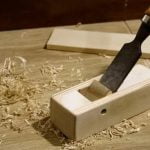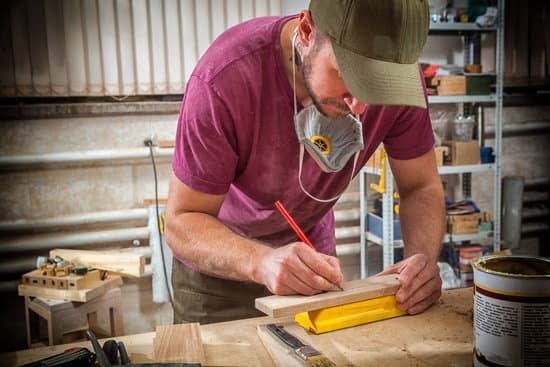Have you ever wondered what woodworking equipment can be used for metal? There is a common misconception that woodworking tools are exclusively for working with wood, but in reality, many of these versatile tools have the potential for use in metalworking as well. This article will explore the various woodworking equipment that can be effectively and safely used for working with metal materials.
When it comes to using woodworking equipment for metal, safety measures are paramount. It’s important to take the necessary precautions to ensure safe usage of these tools, as working with metal presents its own set of hazards. Understanding how to adapt and utilize woodworking tools for metalworking purposes can open up a whole new realm of possibilities for creating metal projects with precision and accuracy.
Throughout this article, we will delve into specific types of woodworking equipment such as table saws, band saws, routers, sanders, polishers, drill presses, and lathes, exploring how they can be effectively utilized in metalworking. From cutting and shaping to drilling and finishing, these tools have the potential to enhance your capabilities in working with both wood and metal materials.
Safety Measures
When using woodworking equipment for metalworking, it is crucial to prioritize safety measures to prevent accidents and injuries. Many people are unaware of the potential for using woodworking tools for metal, but it is essential to understand the specific precautions needed when doing so. Here are some important safety tips and measures to consider when utilizing woodworking equipment for metalworking:
Safety Measures
- Wear appropriate protective gear such as safety goggles, gloves, and a face mask to shield yourself from metal shavings and debris.
- Make sure the workspace is well-ventilated to avoid inhaling harmful fumes or dust particles generated during metalworking.
- Keep your woodworking tools clean and free of wood residue before using them for metal to prevent any potential hazards or malfunction.
- Inspect the equipment regularly for any signs of wear and tear, such as dull blades or worn-out parts, and replace them as needed to maintain safety standards.
It is important to adhere to these safety precautions to ensure a smooth and secure transition from woodworking to metalworking with your equipment. By following these guidelines, woodworkers can confidently expand their capabilities by incorporating metal into their projects while prioritizing safety every step of the way.
Using woodworking equipment for metal requires careful consideration of safety precautions and best practices in order to achieve optimal results without compromising on safety. By incorporating these protective measures into your metalworking process, you can effectively utilize your woodworking tools for a wider range of materials while prioritizing workplace safety.
Table Saw
Woodworking equipment such as a table saw can actually be used for cutting metal sheets, contrary to the common misconception that these tools are strictly for wood. When used correctly and with the appropriate safety measures, a table saw can be a versatile tool for metalworking projects.
When using a table saw for cutting metal, it is important to ensure that the blade being used is suitable for the specific type of metal being cut. Different metals may require different types of blades in order to achieve clean and accurate cuts. Additionally, using clamps or other securing methods can help to keep the metal sheet in place and prevent any potential hazards during the cutting process.
One tip for achieving clean and accurate cuts when using a table saw for metal is to use a slower feed rate compared to what would be used for wood. This helps to reduce heat build-up and prevent damage to both the material and the blade. Taking the time to set up proper outfeed support can also contribute to cleaner cuts when working with metal on a table saw.
Another important consideration when using a table saw for cutting metal is personal protective equipment (PPE). Safety glasses, hearing protection, and proper attire are essential when operating woodworking equipment like a table saw for metalworking.
| Tool | Metal Type | Blade Type |
|---|---|---|
| Table Saw | Aluminum | Titanium Carbide Tipped Blade |
| Table Saw | Steel | High-Speed Steel Blade |
| Table Saw | Copper | Tungsten Carbide Tipped Blade/span> |
Band Saw
The band saw is a versatile woodworking tool that can also be used for cutting different types of metal. While it may seem counterintuitive to use a tool designed for wood on metal, with the right blade and techniques, the band saw can be a valuable asset in metalworking projects. Here are some tips for using a band saw for cutting metal:
- Blade Selection: When using a band saw for cutting metal, it’s important to choose the right blade. A bi-metal or carbide-tipped blade is recommended for cutting through various types of metal. These blades are specifically designed to withstand the hardness of metals and provide clean, accurate cuts.
- Proper Cutting Techniques: In addition to using the right blade, proper cutting techniques are essential for achieving optimal results when using a band saw for metal. It’s important to use a slower cutting speed and apply consistent pressure to maintain control and precision during the cutting process.
- Safety Precautions: As with any woodworking equipment being used for metalworking, it’s crucial to take appropriate safety precautions when operating a band saw. This includes wearing protective gear such as gloves and eye protection, as well as ensuring that the workpiece is securely clamped in place before making any cuts.
By following these tips and taking the necessary safety measures, woodworkers can effectively utilize their band saws for various metalworking projects, expanding the capabilities of this versatile tool beyond traditional woodworking applications.
Router
A router is a versatile woodworking tool that can also be used for metalworking, offering various applications such as edge trimming, slot cutting, and shaping metal pieces. While routers are commonly associated with woodworking, they can be incredibly useful for working with different types of metal as well. This section will explore the different ways a router can be utilized in metalworking and provide insights into achieving precision and quality in the results.
One of the key applications of a router in metalworking is edge trimming. Routers equipped with carbide-tipped bits can effectively trim the edges of metal sheets and bars, providing clean and smooth finishes. Additionally, routers can be used for slot cutting in metal by utilizing straight or spiral bits to create precise slots for various purposes such as fastening components or creating decorative designs.
When it comes to shaping metal pieces, routers offer unmatched versatility. By using different router bits such as round-over, chamfer, or cove bits, metalworkers can achieve custom shapes and profiles in their metal workpieces. This allows for creative freedom and the ability to craft unique designs in metal furniture, fixtures, and decorative elements.
It’s important to note that when using a router for metalworking, selecting the appropriate speed settings and maintaining proper feed rates are crucial factors that contribute to the quality of the finished product. Additionally, using lubricants specifically designed for metalworking can help reduce heat buildup during the routing process.
| Applications | Router Bits |
|---|---|
| Edge Trimming | Carbide-tipped bits |
| Slot Cutting | Straight or spiral bits |
| Shaping Metal Pieces | Round-over, chamfer, cove bits |
Sanding and Polishing
Woodworking sanders and polishers are often overlooked for metalworking, but they can actually be incredibly useful for finishing metal pieces. Whether it’s smoothing out rough edges, removing rust or corrosion, or polishing metal surfaces to a high shine, these tools can be indispensable in achieving the desired final look for various metal projects.
Applications of Sanders and Polishers
Sanders and polishers can be used for a wide range of applications in metalworking. From preparing the surface of metal pieces before painting or coating to removing weld splatter and imperfections, these tools can significantly improve the overall aesthetic and functionality of metal items. Additionally, they can help achieve smooth and uniform finishes on metal surfaces, making them more visually appealing.
Recommended Abrasive Materials and Techniques
When using woodworking sanders and polishers for metal finishing, it’s crucial to choose the right abrasive materials and employ suitable techniques. For removing rust or corrosion from metal surfaces, abrasive pads or discs specifically designed for metalwork are highly recommended.
Additionally, using the appropriate polishing compounds and buffing wheels can help achieve a professional-level shine on metal pieces. It’s also important to ensure that the correct speed settings are used when operating the sander or polisher to prevent damage to the metal surface.
By understanding the potential of woodworking sanders and polishers in enhancing the appearance and quality of metal items, individuals engaged in both woodworking and metalworking can expand their capabilities with existing equipment. With proper knowledge of abrasive materials, techniques, and safety measures, woodworkers can confidently explore new opportunities in utilizing their equipment for various metal finishing tasks.
Drill Press
A drill press is a versatile woodworking tool that can also be used for metalworking, making it a valuable addition to any workshop. When using a drill press for metal, it is essential to take proper safety measures to prevent accidents and ensure precision in drilling. Additionally, selecting the appropriate drill bits for different types of metal is crucial for achieving accurate results.
Safety Measures
When using a drill press for metalworking, it is important to wear safety goggles to protect your eyes from metal shards and debris. In addition, using clamps or a vise to secure the metal piece in place will prevent it from moving during drilling, reducing the risk of injury.
It’s also essential to select the appropriate cutting speed and feed rate based on the type and thickness of the metal being drilled to avoid overheating and premature dulling of the drill bit.
Appropriate Drill Bits for Different Types of Metal
There are various types of drill bits designed specifically for drilling through different types of metal. High-speed steel (HSS) drill bits are suitable for drilling into soft metals such as aluminum, brass, and copper.
For harder metals like stainless steel or cast iron, cobalt or carbide-tipped drill bits are more effective due to their heat resistance and durability. It’s also important to use the correct drill bit size for the desired hole diameter and consider coatings such as titanium nitride or black oxide for increased lubricity and extended tool life when drilling through metal.
Lathe
A lathe is an incredibly versatile piece of woodworking equipment that can also be used for metalworking. When it comes to metal spinning, a lathe can be a valuable tool for shaping metal workpieces into various forms and designs. Metal spinning involves the use of a lathe to rotate a metal disc or tube while shaping it with specialized tools. The high precision and control offered by a lathe make it an ideal tool for this metalworking process.
In addition to metal spinning, lathes are also commonly used for threading metal rods or bars. By using appropriate cutting tools and adjusting the speed and feed rate, a lathe can create accurate and uniform threads on metal parts. This makes lathes essential equipment for tasks such as creating bolts, screws, and other threaded components in metalworking projects.
When it comes to shaping metal, lathes offer unparalleled precision and control. Whether it’s turning down the diameter of a metal rod or creating intricate designs on metal surfaces, lathes provide the necessary power and stability to achieve desired shapes and dimensions. With the right cutting tools and techniques, lathes can be used to create highly detailed and complex metalwork pieces.
It’s important to note that when using a lathe for metalworking, proper tooling selection is crucial. Different types of cutting inserts or bits are required depending on the type of metal being worked on, as well as the specific machining operation being performed. Additionally, understanding the appropriate cutting speeds and feeds for different metals is essential to achieve optimal results when using a lathe for metalworking purposes.
Conclusion
In conclusion, it is clear that woodworking equipment can be effectively used for metalworking with the right techniques and safety measures in place. The common misconception that these tools are only suitable for wood has been debunked, as demonstrated by the versatility of equipment such as table saws, band saws, routers, sanders, drill presses, and lathes in metalworking applications. However, it is crucial to prioritize safety when using woodworking tools for metal, by following appropriate safety measures and guidelines.
Throughout this article, we have emphasized the importance of taking safety precautions when using woodworking equipment for metalworking. It is essential to use proper protective gear such as gloves, goggles, and ear protection to prevent injury. Additionally, understanding the characteristics of different metals and how they interact with woodworking tools is key to ensuring safe and effective metalworking processes.
Furthermore, achieving clean and accurate cuts or finishes in metalwork requires proper technique and knowledge of the capabilities of each woodworking tool. Whether it’s using a table saw for cutting metal sheets or a lathe for shaping and threading metal pieces, understanding the appropriate settings, blade selection, cutting speeds, and other factors will contribute to successful metalworking outcomes. With the right approach and attention to detail, woodworking equipment can indeed be effectively utilized for various metalworking tasks.
Frequently Asked Questions
What Tools Are Used With Metal?
Tools commonly used with metal include hammers, chisels, files, drills, grinders, welding equipment, and measuring instruments like calipers. Each tool serves a specific purpose in shaping, cutting, or joining metal materials.
What Tool Can Cut Through Metal?
One of the most common tools used to cut through metal is the angle grinder. This handheld power tool with a rotating abrasive disc can make quick work of cutting through various types of metal. Other tools that can cut through metal include hacksaws, shears, and plasma cutters.
Is Circular Saw a Metal Work Machine?
Yes, a circular saw can be used for metal work. However, it requires a specific type of blade designed for cutting metal rather than wood.
The circular saw’s high-speed rotating blade makes it suitable for making straight or curved cuts in metal sheets or pipes. It’s essential to use the proper safety equipment and techniques when using a circular saw for metal work.

Hi everyone! I’m a woodworker and blogger, and this is my woodworking blog. In my blog, I share tips and tricks for woodworkers of all skill levels, as well as project ideas that you can try yourself.





